Read the full research report here.


Read the full research report here.

Exploring men’s barriers to seeking professional help
Study design
Key demographics
Analysing the data
Key findings and top barriers
No motivation: Support does not help
Negative experiences of getting support
Negative perceptions of support
Getting help will undermine autonomy and control
Mistrust of professionals
Preference for self‑reliance
Desire for death
No physical opportunity: Support is physically inaccessible
Help is not affordable
Services are not accessible
No social opportunity: Support is socially stigmatised
Seeking help would harm social value and relationships
Seeking help is shameful
Seeking help would impose problems on others
No capability: Support is psychologically out of reach
Difficulty in expressing and/or handling emotions
of trust, low self
feeling too exhausted
Male suicide is a significant public health concern. In nearly every country around the globe, the suicide rate in men is higher than that among women. Factors like a reluctance among men to seek professional support have been suggested as increasing men’s vulnerability, but why are men not getting the help they need, and how can support be made more appealing?
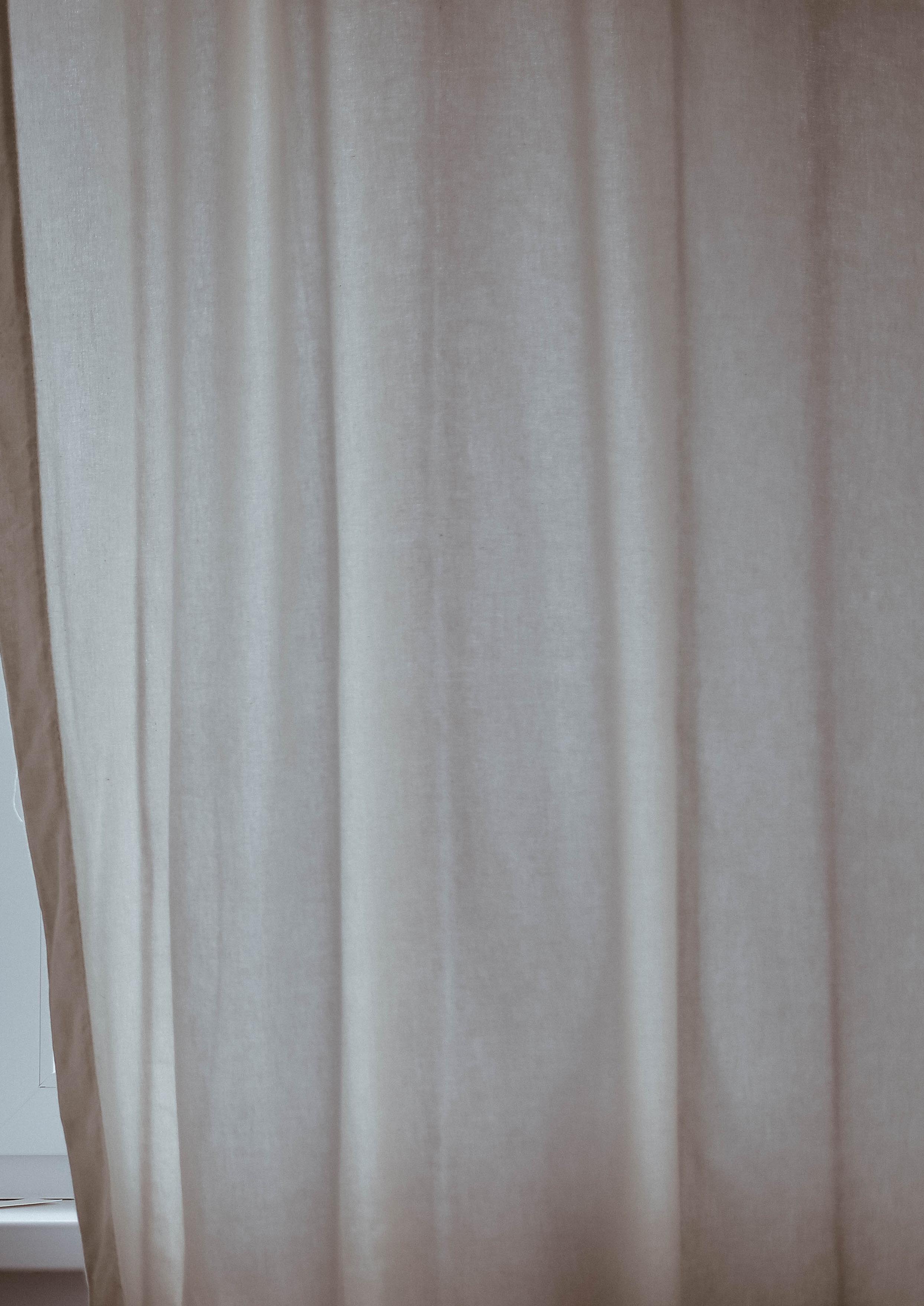
Effective professional support can stop mental health problems from getting worse.
But men are less likely than women to seek professional help - both for general mental health issues and when they’re feeling suicidal (Galdas et al., 2023; Tang et al., 2022).
Studies suggest men face several barriers around accessing support.
These include stigma about help-seeking being weak, potential discomfort with medical treatments, and a desire to handle problems themselves (Cleary, 2017; Oliffe et al., 2020).
Researchers have suggested that societal norms about masculinity may discourage
men from asking for help, pushing them to cope on their own instead.
Understanding the barriers men face around accessing support is key to creating effective interventions that could help lower suicide rates.
We wanted to explore this issue of helpseeking in men who are suicidal more deeply.
This study brings together the insights of 725 men who have been suicidal in the last year to reveal some of the barriers to professional support that they face. We close with 23 recommendations to shape policies, improve services, and guide further research to better support men at risk.
This public guide is based on the following study: Bennett, S., Robb, K.A. & O’Connor, R.C. “Male suicide and barriers to accessing professional support: a qualitative thematic analysis”. Curr Psychol 43, 15125–15145 (2024). https://doi.org/10.1007/s12144-023-05423-1
For six months, we ran a global survey asking men around the world questions about male suicide risk and recovery factors.
Over 3,000 men took part.
The data presented in this study are a subset of responses to specific questions around professional help-seeking in men who are suicidal.
This study focuses on responses to the following open-text question about seeking professional help. Participants were initially asked:
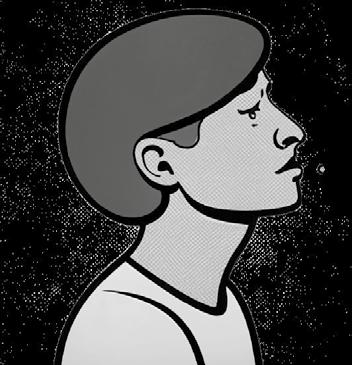





Q: How likely would you be to seek professional help for your mental health if you felt you needed it right now?





Participants could respond using a 3-point Likert-type scale:



















1. Not likely















Participants were then asked:






















2. Somewhat likely










Participants could respond in an expanding, limitless text box.




















3. Very likely



Q: If you answered that you would not be likely what would be some of the barriers to you accessing professional support?
We then analysed the responses from 725 men who had experienced thoughts of suicide and/or attempted suicide in the past week or year.

We then conducted a ‘thematic analysis’ an analysis technique that looks for patterns (or themes) within a set of data.
We carefully reviewed each of the 725 responses multiple times, searching for recurring themes expressed by the men, grouping similar ideas together. In doing so, we began to identify common barriers men may face around getting professional help.
To understand how common certain themes were across the 725 responses we counted how often they came up.
As you read the findings, you’ll notice percentages associated with each theme. For example: “The biggest barrier mentioned in our study was financial (20%).”
This number represents the percentage of codes from our analysis that suggests evidence for this theme. It’s crucial to approach these numbers with caution and not read them as the true frequency of themes. For example, some men may not be able to afford professional support, but did not mention this in their answer. So, we don’t actually know how widespread this issue is. All our numbers need to be viewed with caution and represent the number of codes in our analysis that related to that theme.
During our analysis process we noticed that our findings matched onto the ‘Behavior Change Wheel’ created by Michie et al. (2011).
The ‘Behavior Change Wheel’ combines ideas from 19 different behaviour change models and provides a structured way to identify what needs to change to promote a new behaviour or stop an unwanted one. Understanding how to effectively encourage and support behaviour change can be key to achieving longterm benefits and creating positive outcomes.
The ‘Behavior Change Wheel’ focuses on three main factors that influence behaviour:
A person must be motivated to do a behaviour. This relates to a person’s desire and determination to do a behaviour, often influenced by their goals, beliefs, and attitudes.
There must be opportunities in a person’s physical and/or social environment to undertake a behaviour. This includes physical access, resources, and social support like the impact of friends, family, and society on a person’s behaviour.
People need to believe they can do a behaviour in order to attempt it. This includes both physical ability and mental skills needed to perform a behaviour.
We found our themes mapped on to the Behaviour Change Wheel’s framework of motivation, opportunity, and capability. As such, we hope to provide practical targets to guide the creation and implementation of interventions to strengthen men’s help-seeking.
1. NO MOTIVATION: SUPPORT DOES NOT HELP
2. NO PHYSICAL OPPORTUNITY: SUPPORT IS PHYSICALLY INACCESSIBLE
3. NO SOCIAL OPPORTUNITY: SUPPORT IS SOCIALLY STIGMATISED
4. NO CAPABILITY SUPPORT IS PSYCHOLOGICALLY OUT OF REACH
1. NO MOTIVATION: SUPPORT DOES NOT HELP
• Negative experiences accessing support
• Negative perceptions of support
• Getting help will undermine autonomy and control
• Mistrust of professionals
• Preference for self-reliance
• Desire for death
2. NO PHYSICAL OPPORTUNITY: SUPPORT IS PHYSICALLY INACCESSIBLE
• Help is not affordable
• Services are not accessible
3. NO SOCIAL OPPORTUNITY: SUPPORT IS SOCIALLY STIGMATISED
• Seeking help could harm social value and relationships
• Seeking help is shameful
• Seeking help would impose problems on others
4. NO CAPABILITY: SUPPORT IS PSYCHOLOGICALLY OUT OF REACH
• Difficulty in expressing and/or handling emotions
• Lack of trust, low self-esteem, feeling too exhausted
Attempt this week:
NO MOTIVATION: NEGATIVE PAST EXPERIENCES
Attempt this year:
NO PHYSICAL OPPORTUNITY: HELP IS NOT AFFORDABLE
Attempt longer ago; thoughts of suicide this week:
NO MOTIVATION: NEGATIVE PAST EXPERIENCES
Attempt longer ago; thoughts of suicide this year:
NO PHYSICAL OPPORTUNITY: HELP IS NOT AFFORDABLE
Thoughts of suicide this week:
NO PHYSICAL OPPORTUNITY: HELP IS NOT AFFORDABLE
Thoughts of suicide this year:
NO PHYSICAL OPPORTUNITY: HELP IS NOT AFFORDABLE
18-30: 31 to 50: 51+:
NO PHYSICAL OPPORTUNITY: HELP IS NOT AFFORDABLE
NO MOTIVATION: NEGATIVE PAST EXPERIENCES
NO MOTIVATION: NEGATIVE PAST EXPERIENCES
Approximately 43% of codes related to men who expressed a lack of motivation to get help because they didn’t believe professional support would be useful. This theme included six related ideas:
1. Negative experiences of getting support
2. Negative perceptions of support
3. Getting help will undermine autonomy and control
4. Mistrust of professionals
5. Preference for self-reliance
6. Desire for death
Attempted suicide over a year ago, 2 to 4 previous attempts, thoughts of suicide in the past week, 40, Austria:
“... all the therapists I talked to in the past told me to “man up”, “grow some”, downplayed my issues (“That can’t be a problem for such a big boy!”) or made fun of me. I consider the profession of psychotherapy to be broken.”
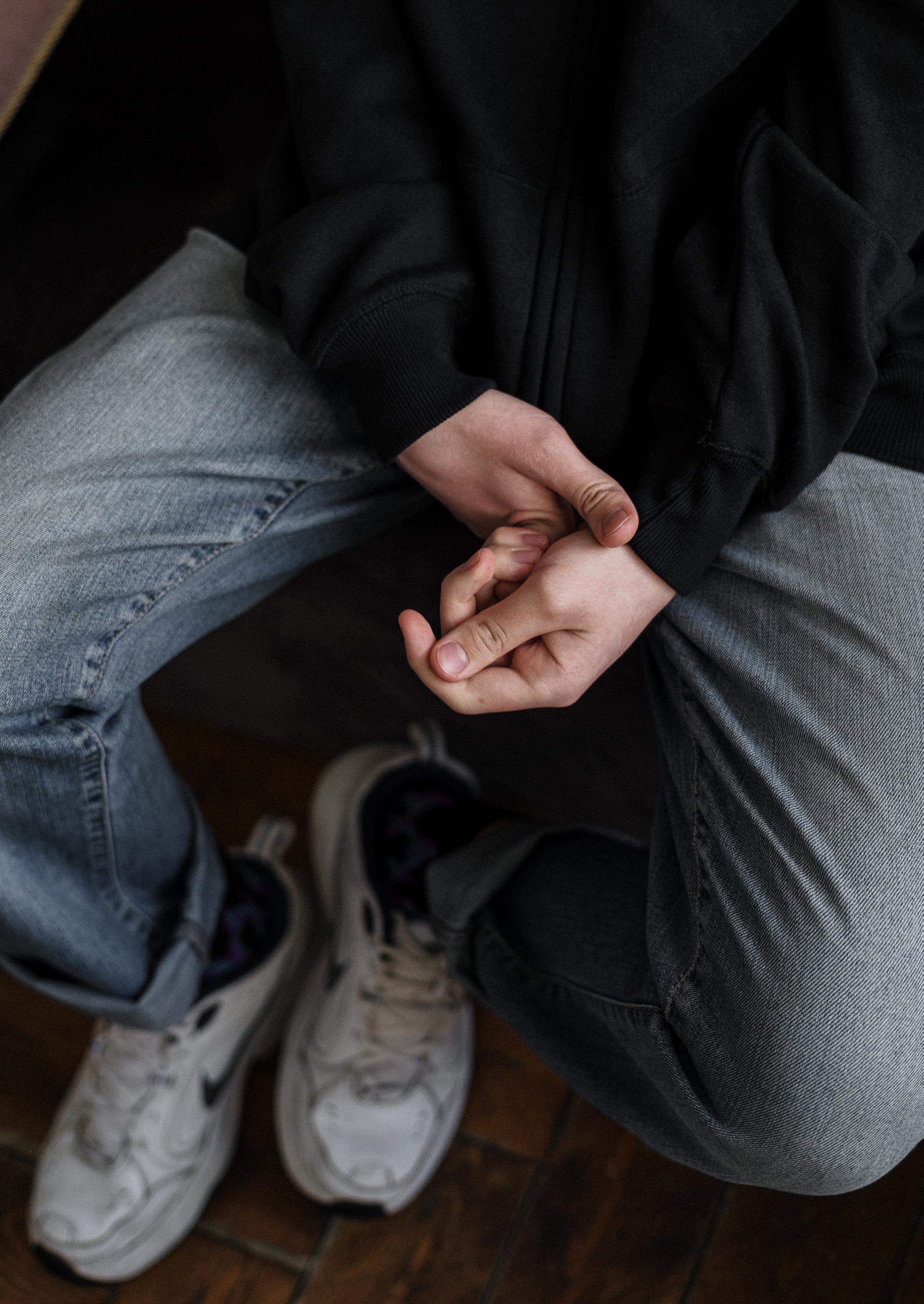
Thoughts of suicide in the past week, 19, Poland: “No one can help me. I am just the way I am”
Thoughts of suicide in the past week, 39, UK:
“Services dont care about men.. Counselling is not set up for the male psyche”
Thoughts of suicide in the past week, 51, UK:
“... In my case, you can take all the pills you want, talk for as long as you want, but ultimately, it’s all a pointless exercise that doesn’t alleviate the financial yoke constantly tied to your neck. It’s band aid on a gunshot wound.”
Negative past experiences when seeking help was one of the most common issues in our study.
About 15% of codes were of men who said they were discouraged from seeking help because of bad experiences in the past – and the actual number could be higher, as this was just the men who mentioned it.
These negative experiences were mostly with doctors, therapists, and mental health professionals, but some men also had bad encounters with helplines or free services.
The types of bad experiences varied: from finding interventions ineffective, to feeling ignored or belittled by staff.
Some men suggested therapy provided temporary relief, which faded over the long term.
Other men felt interventions had only intensified their suicidal thoughts.
Some men had tried different therapies and medications, with nothing seeming to work. This seemed to leave some men feeling hopeless and saying they had given up on seeking help altogether.
Thoughts of suicide in the past week, 27, UK:
“The ‘barriers’ are that it doesn’t work. I have tried this nonsense in the past for the best part of a decade and none of it does anything for me. The problem is not with me, it is the so-called “support” offered and how shit it is.”
Thoughts of suicide in the past year, 66, UK:
“I have had counselling previously and to be honest it does not work. Not enough time applied to each case, you just go through the motions to make the figures look good. Many of the staff are too young to have experienced the traumas that the client has, so cannot easily empathise or realise the effect these can have.”
Men who have attempted suicide:
Attempted suicide over a year ago, two previous attempts, thoughts of suicide in the past year, 32, USA:
“I’ve had multiple therapists that were ineffective, and tried multiple medications that had mixed results. Not taking any now because the increased motivation increased the suicide likelihood. Literally safer living in apathy.”
In our study, 11% of codes related to doubts some men had about whether professional support would be helpful.
Unlike, the previous group, these men didn’t mention specific bad experiences in the past, but still questioned the value of seeking help.
Their reasons varied: some men were unsure about medication, questioning if it could actually address their issues.
Other men didn’t see the point in talking about their problems, especially if they felt their challenges were due to practical issues like money or unchangeable things like their appearance.
Some men saw their pain as a natural response to life’s difficulties, while other men felt their problems were simply too big to fix.
Thoughts of suicide in the past year, 19, USA:
“... the problems in my life causing me to consider suicide are more concrete (based in reality), and less based on just my mental state. While ‘professional help’ might improve my mental state *a bit*, it won’t actually solve any of the problems in my life.”
Thoughts of suicide in the past year, 30, UK:
“I do not believe that telling anyone problems or feelings would ever be able to fix it. To me it seems pointless”
Attempted suicide over a year ago, thoughts of suicide in the past week, 41, USA:
“It’s not really addressing the fundamental reasons why I prefer to die. I have no income above the barest of necessities and no clear or safe path to it...”
In this group, about 7% of codes were from men didn’t feel motivated to seek support because they were worried it could affect their independence and control over their own lives.
These men appeared to be concerned that seeking help would mean being forced to take medication they didn’t want, sectioned, or having their health records marked in a way that could affect their ability to get jobs in the future.
Men with thoughts of suicide:
Thoughts of suicide in the past week, 21, Croatia:
“In Croatia, if you visit a psychiatrist using the states funds - it is permanently marked on some sort of record so future employment companies can see that you’ve had psychiatric treatment, which would lead to 95% of them refusing to employ you”
Thoughts of suicide in the past week, 28, Netherlands:
“Afraid of being drugged because it benefits the therapist, to the point of living as a husk. Being locked up in a ward because its easier.”
Attempted suicide over a year ago, 5 previous attempts, thoughts of suicide in the past week, 33, Czech Republic:
“I feel I would prob. end up on some gov watchlist as some violent terrorist/incel, limiting my rights and freedom, even if I never wished or wanted any harm on anyone.”
Attempted suicide in the past year, thoughts of suicide in the past week, 31, UK:
“Having my agency removed from me and being placed in an institution”
Attempted suicide in the past year, multiple attempts, thoughts of suicide in the past week, 29, UK:
“... being sectioned and I can’t do that since I won’t get paid by work and lose everything else”
Attempted suicide in the past year, 6 previous attempts, thoughts of suicide in the past week, 30, UK:
“I don’t want to lose my job or freedom in admitting that I want to kill myself.”
In our study, 6% of codes were from men who had concerns about mental health professionals.
These concerns seemed to make men hesitant to seek support.
Some men felt that professionals might be more interested in making money than truly caring for people. Other men worried that professionals would not really understand or empathise with their unique experiences as men, or that they would push medication as the only solution.
Thoughts of suicide in the past week, 19, USA:
“... I feel like doctors don’t really care about me or any other person, they just act caring for money or just because their profession requires so...”
Thoughts of suicide in the past year, 33, UK:
“... Unwillingness to talk about personal issues with a random person who’s competency and intelligence I’m unable to assess in advance. ...”
Men who have attempted suicide:
Attempted suicide over a year ago, 2 to 4 attempts, thoughts of suicide in the past week, 64, Australia:
“I have worked in health care for more than 30 years, and have personal knowledge of the attitudes of many HCW [Health Care Workers] to men and boys. I’ve experienced substantial overt misandry in many HCW, mental health providers, and particularly counsellors [...] Why, when I need help and am at my most vulnerable, would I expose myself to such a demoralising experience.”
Attempted suicide in the past year, 12 to 15 attempts, thoughts of suicide in the past week, 25, Australia:
“Getting looked at like a burden, a strain on services or because I’m a man I must be the one in the wrong. I’m a victim of domestic violence as well and my partner was a female. The system teaches that men are the problem and it would literally make me worse off by going to the hospital or reaching out for services.”
A small percentage of codes related to men who seemed reluctant to seek support, because they wanted to manage their mental health challenges on their own (3%).
For these men, tackling issues independently was seen as therapeutic or a demonstration of strength.
A small number of codes (2%) related to men who seemed to lacked motivation to seek professional help because they didn’t want to get better and/or had a desire to die.
These men seemed to believe that suicide was the solution to their problems, rather than getting professional help.
Thoughts of suicide in the past year, 21, UK:
“As stubborn as it may be, I prefer to deal with my emotions on my own and find it cathartic to work through them.”
Men
Thoughts of suicide in the past week, 18, Czech Republic:
“I don’t think that suicide is wrong. I just don’t see the meaning in continuing with life, I don’t see why should I live. And I don’t understand why it should be so bad wanting to die when we live in a f-ed up world.”
Attempted suicide in the past year, thoughts of suicide in the past year, 27, USA:
“I don’t want anyone’s help. If I can’t get through my problems on my own, I’m not worth anything...”
Attempted suicide over a year ago, 2 to 4 attempts, thoughts of suicide in the past week, 64, Australia:
“When I’m at the point of attempt or close to I don’t want to be stopped so why would I contact anybody?”
Thoughts of suicide in the past year, 35, Italy:
“I was in therapy for about 1 and 1/2 years. Not only it didn’t help me, it ended up making me feel worse. My therapist was a woman who had a negative opinion of men, and she made no effort whatsoever to empathize with some of my problems...”
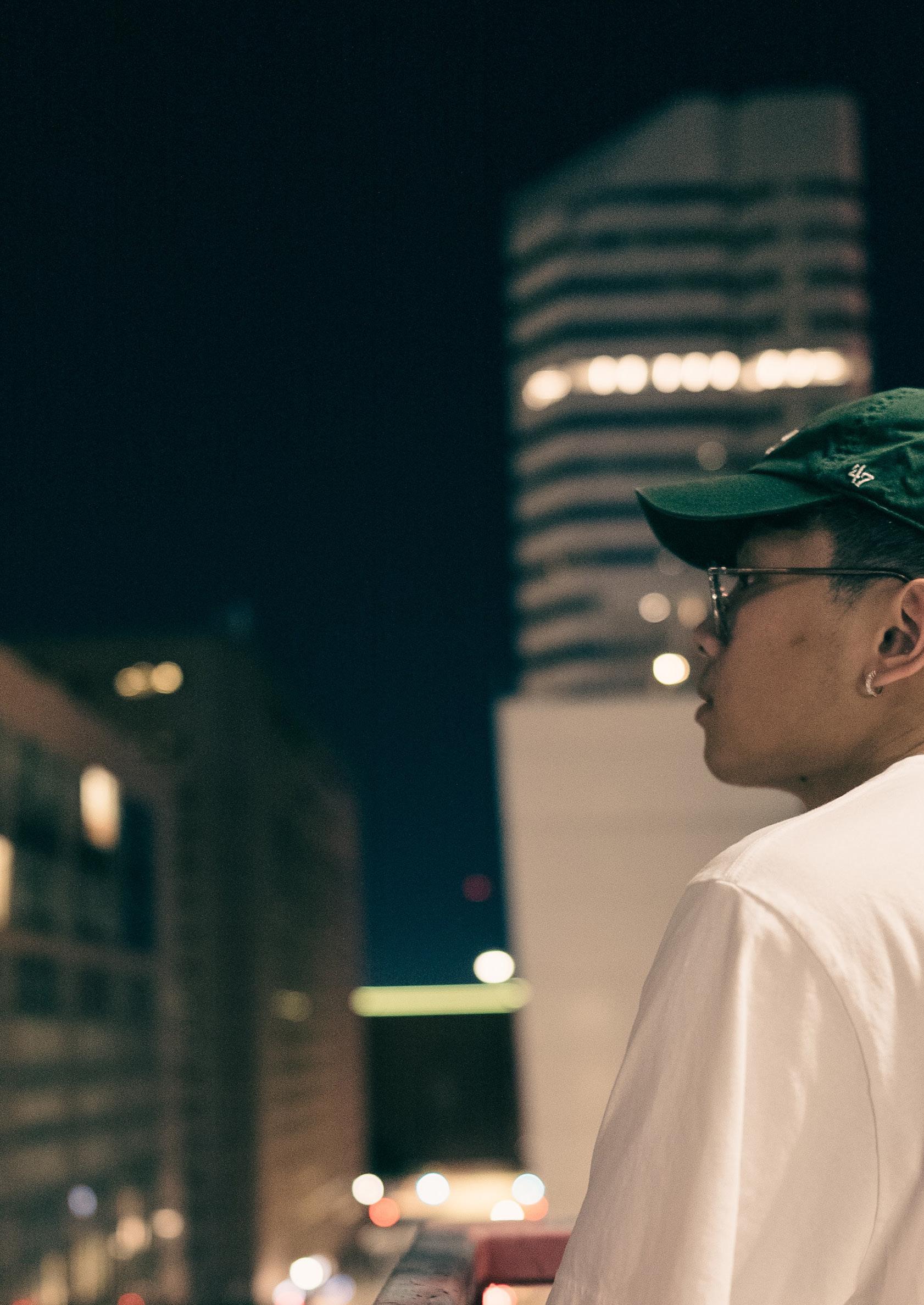
Thoughts of suicide in the past week, 18, UK:
“I just want to die and I don’t feel life is worth living and I’m already in a deep pit that nothing is gonna help”
Thoughts of suicide in the past week, 23, Canada:
“Went to therapy for a few sessions and is was useless, made me feel worse than before”
In our data, 27% of codes related to men who seemed willing to seek professional help but faced physical obstacles that made it difficult to access. As a result, professional support felt out of reach. This theme had two sub themes:
• Help is not affordable
• Services are not accessible
Thoughts of suicide in the past week, 33, UK:
“I have a job and can’t get away easily for an appointment.”

Attempted over a year ago, thoughts of suicide in the past week, 28, USA
“Well the thing is I WOULD go, but I don’t have money”
Thoughts of suicide in the past week, 30, UK:
“NHS waiting lists mean I would not be able to access support for a long time, so it’s not worth it.”
The biggest barrier mentioned in our study was financial (20% of codes).
The expense of professional support was unaffordable for one-fifth of participants, making it the most common barrier in our study.
Thoughts of suicide in the past year, 46, UK:
“I know how bad the NHS waiting lists for therapy are. My past therapy was private and I can’t afford that right now. So I’ll just muddle through and hope I make it.”
Attempted suicide longer than a year ago, thoughts of suicide in the past week, 29, Brazil:
“In my country, this kind of help is hard to get, a good one even harder, and if you have no money, slashing your artery is a cheap and effective solution”
Participants also mentioned practical barriers to accessing services (7% of codes).
Men talked about long waiting lists, a lack of local services, or support that didn’t fit with their work schedules. Some men also felt confused about how to start seeking help, such as not knowing who to contact, or the different types of therapy available, or whether it would be confidential.
Thoughts of suicide in the past year, 26, USA:
“There are no mental health providers in my insurance in my area that take appointments outside of working hours. I would have to quit my job to see them, but then would lose my insurance so I wouldn’t be able to anyway.”
Attempted suicide longer than a year ago, 2 4 previous attempts, thoughts of suicide in the past week, 18, Canada:
“I don’t know where to go or who to talk to”
Thoughts of suicide in the past year, 23, Germany:
“Can’t get a therapy spot, no one’s taking patients in my area at the moment”

Thoughts of suicide in the past week, 24, Ireland
“Can’t afford it at all.. I did 8 free sessions here in Ireland but after that I would have had to pay.. I am €3000 in debt to my brother so I can’t exactly go blowing 50 quid an hour on a therapist”
Sixteen percent of codes indicated that men felt that accessing help would go against social and cultural expectations. This theme, divided into three sub‑themes, highlights men who live in social environments where seeking help isn’t seen as acceptable or appropriate behaviour.
• Seeking help could harm social value and relationships
• Seeking help is shameful
• Seeking help would impose problems on others
Attempted suicide over a year ago, thoughts of suicide in the past year, 33, Canada:
“The admission of weakness (although my logical side understands just how stupid that is, pride gets in the way)”
Thoughts of suicide in the past year, 18, Singapore:
“Cultural norms ‘brown people don’t go to therapy’”

Attempted suicide over a year ago, thoughts of suicide in the past week, 18, USA:
“My role as the one who helps others. Those close to me might feel themselves a burden, thus undoing the work I sacrificed my mental health for.”
Eight percent of our codes were from men who seemed worried about the potential damage to their reputation and social standing if others found out they sought help.
These men seemed to fear being judged and that seeking help could change how other people see and value them. Some men were also concerned about the negative impact it could have on family relationships, fearing disappointment, embarrassment, or disapproval from family members. For some men, part of their struggle related to family dynamics, and they were hesitant to bring these issues to light.
Thoughts of suicide in the past year, 18, India:
“... I may be ridiculed by my extended family because most of them have regressive attitudes towards mental health issues, despite suffering from several themselves.”
Attempted suicide longer than a year ago, thoughts of suicide in the past week, 26, Latvia:
“… this would signal to my family that there is something wrong, and would open a can of worms I don’t want to deal with…”
A smaller cluster of codes (5%) were from men who mentioned their own shame and embarrassment as obstacles to seeking help.
These men felt getting help was ‘weak’ and would mean dishonouring themselves by not living up to social expectations to cope alone. While some men accepted this belief, other men rejected it but still felt bound by it.
Thoughts of suicide in the past week, 19, UK:
“It’s pathetic. If a guy goes to therapy he’s weak. Men are meant to be strong any guy who goes to therapy is admitting that he’s weak”
Attempted suicide longer than a year ago, 2 4 previous attempts, thoughts of suicide in the past week, 19, Australia:
“Too taboo to talk about that as a man. (…) Just doing this survey makes me feel weak and is emasculating even though I strongly sympathise with men who are depressed. I would encourage men to go to therapy or get any other help because I would never judge them for that but I could never go myself.”
A small group of men from high income countries and various age groups felt that seeking support could harm others (3% of codes).
These men seemed to believe that revealing their problems would burden loved ones, cause unnecessary worry, or take up resources in already strained health systems that could be better used by someone in greater need.
Thoughts of suicide in the past week, 42, UK:
“I do not wish to be a burden.”
Men who have attempted suicide:
Attempted suicide longer than a year ago, over 5 previous attempts, thoughts of suicide in the past week, 23, USA:
“... I don’t want anyone to worry about me...”
Attempted suicide in the past year, thoughts of suicide in the past week, 51, Australia:
“taking up resources that should be used on people more worthy or ‘needy’”
Thoughts of suicide in the past year, 19, USA:
“I would be ashamed of what others, and myself, thought of me.”

Thoughts of suicide in the past week 18, Portugal:
“I wouldn’t want to bother other people with my problems”
Fourteen percent of codes indicated that men felt they lacked the psychological skills and abilities to seek and make use of professional support, making professional support seem out of reach. This theme had two sub themes:
• Difficulty in expressing and/or handling emotions
• Lack of trust, low self-esteem, feeling too exhausted
Attempted suicide over a year ago, 2 previous attempts, thoughts of suicide in the past week, 35, Australia:
“My inability to ask for help when I need it”
Thoughts of suicide in the past year, 34, UK:
“Extremely low trust in others.”
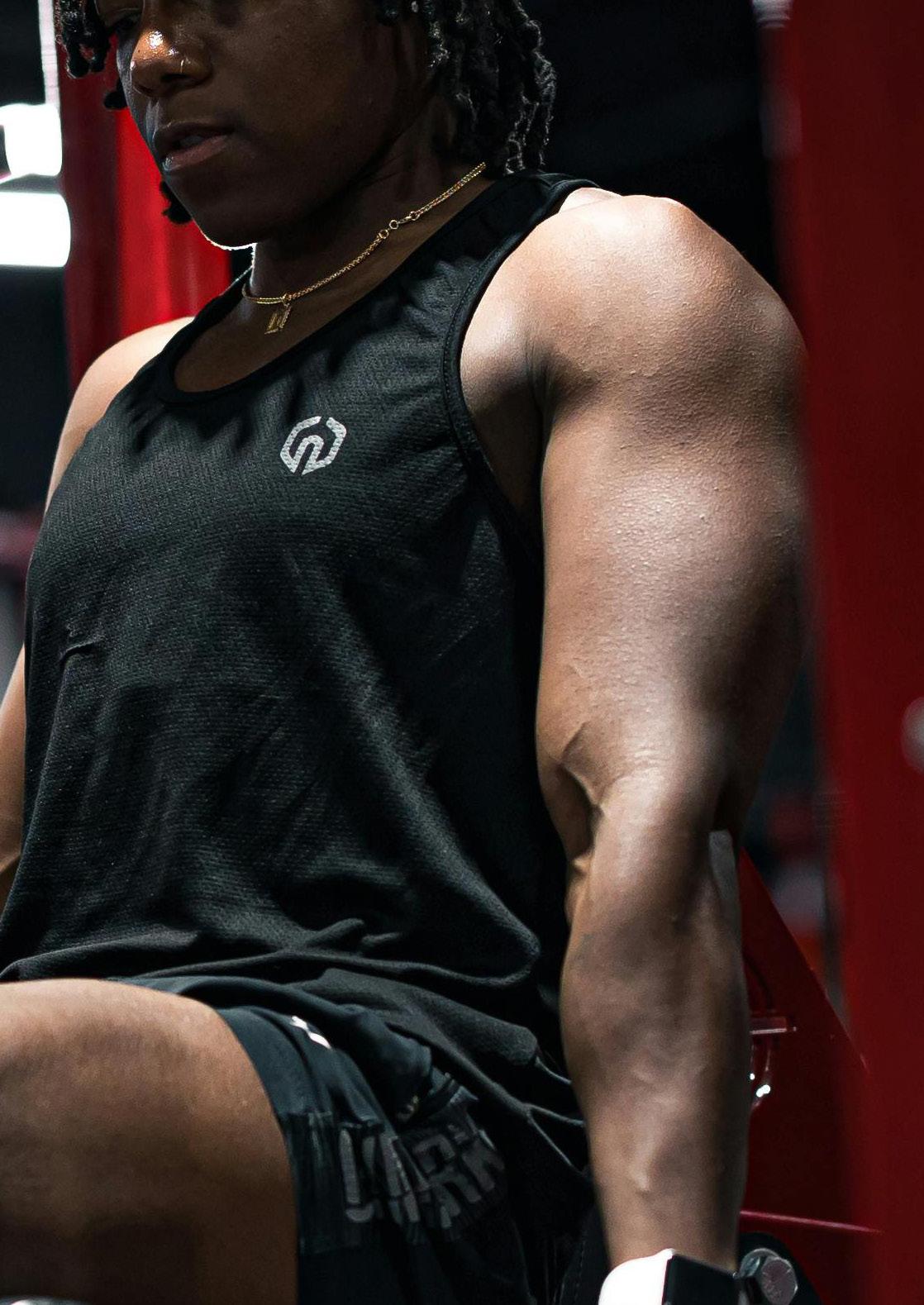
Attempted suicide over a year ago, thoughts of suicide in the past week, 30, USA:
“I have a hard time talking to people especially strangers and I have a hard time leaving my house.”
Attempted suicide in the past year, 3 previous attempts, thoughts of suicide in the past week, 26, Netherlands:
“Don’t deserve it/ I am not worth it”
Seven percent of our coding was from men who talked about feeling uncomfortable, scared, embarrassed, or ashamed when it comes to expressing their feelings.
They mentioned having trouble knowing how to open up, whether in general or to a stranger or professional.
Some men worried that they wouldn’t be able to explain their problems well and might be misunderstood.
A few men were also concerned that facing their emotional pain might be too overwhelming for them to handle.
Thoughts of suicide in the past week, 29, Germany:
“... I don’t know how to put my issues into words. I always feel ridiculous when trying to phrase it, it always appears shallow and misses the mark by miles...”
Thoughts of suicide in the past week, 29, USA:
“I’m not very good at being open to talking and tend to entrench myself to avoid confronting my emotion. I’m afraid that I could do something rash if forced to confront myself. I tend not to handle intense emotions well.”
Men who have attempted suicide:
Attempted suicide in the past year, thoughts of suicide in the past week, 51, Australia:
“I cannot always articulate the feelings/ emotions (or lack of) that are making me this angry towards myself”
Attempted suicide over a year ago, 2 previous attempts, thoughts of suicide in the past week, 20, France:
“I don’t want to share my feelings.”
Attempted suicide over a year ago, over 5 previous attempts, thoughts of suicide in the past week, 20, Sweden:
“I don’t like talking and it makes the pain so much worse so i rather bottle it up since that makes me feel a bit better”
Attempted suicide over a year ago, over 3 previous attempts, thoughts of suicide in the past year, 44, UK:
“I’m a middle aged male, I don’t talk about my emotions!...”
Another group of men, making up 7% of our coding, felt psychologically ill equipped to access support.
These men mentioned barriers including low confidence, poor self-esteem, and feeling unworthy of help or attention.
Some men also struggled with trusting others, lacked the energy to seek help, and/or experienced intense social anxiety.
Thoughts of suicide in the past week, 27, Canada:
“I can barely brush my teeth, imagine spending 5 fucking hours trying to figure out if my insurance covers some asshole who’s going to tell me to improve my diet and go for a walk...”
Thoughts of suicide in the past year, 22, USA:
“I’m too depressed to seek help, cant get the motivation to do it.”
Attempted suicide in the past week, multiple previous attempts, thoughts of suicide in the past week, 28, UK:
“I don’t feel like I’m worth the effort. I’ll just ruin everything again.”
Attempted suicide over a year ago, 2 previous attempts, thoughts of suicide in the past week, 24, Canada:
“..feeling too low energy to do the work to seek counselling...”
Attempted suicide in the past year, 2 to 4 attempts, thoughts of suicide in the past week, 20, UK:
“once again, i do not deserve my problems to be fixed. i believe i deserve to die.”
Attempted suicide over a year ago, thoughts of suicide in the past week, 23, UK:
“...I have severe anxiety problems with going outdoors in public or to new places and I don’t think I could manage it without engaging in extensive self harm to cope with the stress...”

Our findings suggest cultural norms of masculinity may contribute to some of the barriers men who are suicidal face in seeking professional support.
For example:
• Men may struggle with expressing emotions due to societal pressure to suppress them.
• Therapies that focus on discussing emotional challenges may not appeal to men taught to deny their feelings.
• Gender biases may influence how men are treated by professionals.
• Cultural expectations that men should be strong and deny pain may limit men’s social opportunities to seek help, both due to their own prejudices and/or those of people around them.
• Masculine norms of self-reliance and control may mean some men prefer to handle their issues alone and mistrust professionals.
• Fears about being medicated, hospitalised, or negatively impacting future job and romantic opportunities may deter men conditioned to be in control and successful.
• Norms of male provision and protection may mean some men struggle to conceive of themselves as people who also need care and support at times
Our findings suggest we need to create gender sensitive suicide prevention strategies that recognise the complex ways masculinities affect help seeking behaviours.
It’s important to note that masculinity is not a fixed trait but a set of social and cultural expectations that vary across different contexts. Men should not be treated as a single, uniform group. Masculinity varies greatly across different cultures and stages of life. Every man is unique, influenced by a mix of biological, socioeconomic, political, and environmental factors. Because of this diversity, what’s true for one man - like the belief that seeking help is a sign of weaknessmight not be true for another man who wants support but can’t access it.
Similarly, interventions should meet men where they are currently. For example, we may need short-term, interventions to help some men cope in a self-reliant way, while also promoting long-term cultural change to normalise men’s interdependence and not needing to cope alone. Interventions should celebrate masculine strengths while addressing areas that need change, helping men accept their mental health challenges without feeling ashamed or inadequate.
Our findings suggest men who are suicidal experience specific barriers relating to their motivation, opportunity, and capability to seek support. In the following discussion, we explore potential interventions to address aspects of each of these barriers.
We urgently need to understand why professional support isn’t effective for some men and what kind of help they want.
Alarmingly, 15% of codes referenced men with a negative past experience of seeking support.
The fact that some men find professional help ineffective or even harmful is a significant problem. Encouraging men to seek help only works if the help they receive is genuinely beneficial and makes a positive difference.
Studies show therapies like Cognitive Behavioral Therapy (CBT) and Dialectical Behavior Therapy (DBT) can reduce suicidal behaviours (Bryan, 2022), but these treatments aren’t always available, and it’s unclear if they work well for men.
We urgently need to understand why professional support isn’t working for some men and what kind of help they want.
Negative experiences of help may deepen some men’s hopelessness and reinforce a belief that suicide is the only way to escape their pain.
This presents a tough ethical challenge for those working in suicide prevention.
Public health campaigns may need to carefully address the reality of seeking professional help within the constraints of our current mental health systems. Rather than suggesting that seeking help is a quick and easy fix, it may be important to be honest with men that getting help can sometimes be slow, not always work immediately, but can change your life if the right support is accessed.
Understanding what help men want.
Suicide prevention efforts should consider a broader range of support options, including community and peer support, literature, music, sports, nature, and self-help tools. Some men see their suicidal pain as a natural response to life’s hardships, not something that can be fixed with medication or therapy. These men might be looking for non-medical interventions that build community bonds and provide moral comfort. Investing in community-based and peer-support programmes could provide more acceptable forms of help for some men in distress. Other men may be more likely to seek help if they can reciprocate, making community and peer-led interventions particularly appealing.
It is also important to explore connecting mental health services with interventions that address issues like unemployment, addiction, and debt, which are often faced by men who are suicidal.
We need to explore how professionals and men who are suicidal engage with each other. Our findings suggest some men see professionals as financially privileged or hostile towards men, which can undermine trust and safety.
Training for health professionals should include understanding male socialisation and exploring personal gender biases to ensure professionals can effectively support men and foster compassionate ways of working with men.
1. Understand men’s experience and what they want: Explore what works and what doesn’t when men seek help for a suicidal crisis. Explore what kind of support men who are suicidal actually want.
2. Explore perceptions of help: Explore the best language and messages to encourage men to seek help. This includes understanding how men make sense of their suicidal feelings and how they view interventions like medication and therapy.
3. Collaborate with lived experience experts: Work with men who have lived through suicidal experiences to design services to increase acceptability and potential effectiveness.
4. Multi agency support: Look into combining different types of support, like psychological help with practical assistance (e.g., debt relief, housing support).
5. Self management tools: Explore self-help and self-learning tools to help men manage their mental health and suicidal feelings, independently and privately, and build their sense of control and agency.
6. Non medical support: Explore the effectiveness of community-based, workplace, and peer support interventions.
7. Perceptions matter: Understand how men who are suicidal view professionals and vice versa, and how these perceptions affect the help-seeking process.
8. Specialised training: Train professionals in male socialisation, masculine norms, and specific male suicide risk and recovery factors. Support professionals to explore their own gender biases and how these may impact working with male clients.
9. Male sensitive approaches: Develop treatment and assessment plans that are sensitive to men’s specific needs.
10. Avoid outdated stereotypes: Don’t present one-dimensional portrayals of men as reluctant or poor help-seekers.
11. Be honest: Explore reflecting the real challenges of help-seeking journeys within the current mental health system.
11. Clear pathways: Help men understand the different ways they can seek help and the various therapeutic options available.
We urgently need to increase some men’s physical and social opportunities to get support.
A big factor relevant to whether someone does a behaviour or not relates to the “opportunity” they have to do it. This means the chances they have in their physical and social surroundings to make it happen. In our research, we noticed that some men faced obstacles in both these areas.
Some men lacked physical opportunities to get help because it was too expensive, unavailable in their area, or long waiting lists.
These barriers are particularly concerning for this group of men in need. Feelings of hopelessness, defeat, and entrapment can drive suicidal thoughts. If men want help but can’t afford private support and know public services are stretched with limited availability and long waiting lists, it may intensify their sense of hopelessness and despair.
We need to improve physical access to help.
Digital interventions could be a useful tool for helping men access immediate and free support, whenever they need it.
Some men felt they didn’t have the social opportunity to get help as they were worried about what other people might think. Stigma around mental health is still strong in some communities. Suicide prevention campaigns need to be mindful that it will not always be socially safe for a man to disclose his distress.
It’s important public health campaigns not only target changing some men’s attitudes towards seeking help, but also those of the wider community that may be imposing social barriers around getting support.
While repressive attitudes towards men getting help are changing, a minority of men still described feeling too ashamed to get support because they thought it was a sign of weakness.
Some men acknowledged that this belief was wrong - that men should get help - but they still couldn’t bring themselves to do so.
Health professionals need to be mindful towards men who may be caught between old norms of male emotional suppression and new norms for men to talk about their struggles.
Other men seemed to feel like it was their role to be strong and take care of others. This idea of being a protector may make it hard for these men to see that they may also need support at times.
To encourage more men to seek support, it might help to talk about it in terms that resonate with how men see themselves, like framing it as taking control of a tough situation or as an act of love and care for their families who will want them well.
The lingering cultural shame around men seeking help and communicating their struggles means we need to keep thinking about how we culturally talk about men as emotional beings. Men - just like everyone else - have biological systems of emotions which have evolved over millions of years.
Learning to understand and manage emotions is vital for well being.
Encouraging men to recognise their emotional struggles isn’t about making men “more feminine” but helping them reconnect with an essential part of being human that society often denies them.
Talking about masculinity
It’s also important to consider how we discuss masculinity.
Labelling masculinity as “toxic” can make men feel unfairly judged and misunderstood. This can make it even harder for some men to open up.
Additionally, depicting men as always privileged can add to some men’s shame and sense of failure when they struggle.
To encourage more men to seek professional support, we need a compassionate and nuanced conversation about what it’s like to be a man today and how cultures can harm men.
By addressing these issues thoughtfully, we may help more men feel comfortable seeking help.
Accessible digital help: Develop digital tools and resources for men who are suicidal but can’t afford or can’t access services.
Challenge stigma: Create campaigns that fight against societal stigma around male distress and seeking help. Bear in mind that some men may be caught between old cultural expectations that ‘men shouldn’t show emotions’ and new ideas that ‘it’s okay for men to talk about their feelings.’
Role models: Use high-profile men and community leaders to normalise seeking help.
Emotional health: Encourage campaigns that centre men as emotional beings and the importance of emotional regulation to mental health.
Legitimising care: Develop messages that affirm men as deserving and worthy of care and support.
We urgently need to increase some men’s psychological capabilities to get support.
Central to doing a behaviour is believing you can do it. Our findings indicate that some men who are suicidal feel they lack the psychological capacity to access and benefit from professional support. Consequently, seeking help can seem out of reach and beyond their capabilities.
Some men in our study seemed reluctant to go for help because they were concerned about their ability to describe their emotions effectively and felt uncomfortable with talking about their feelings.
This evidence aligns with previous research to suggest men who are suicidal can experience emotional suppression, disconnection, and dysregulation (Bennett et al., 2023).
Feeling unable to articulate emotional pain may make seeking help distressingly inaccessiblesome men may wonder how they can be helped for something they cannot describe.
Other men described not wanting to go for help because they believed themselves unworthy of support. This finding also resonates with existing evidence to indicate that men who are suicidal can experience profound feelings of low selfworth and failure (Bennett et al., 2023; Cleary, 2017; Oliffe et al., 2017).
Consequently, some men may believe they do not deserve support.
Trust issues also emerged as a significant barrier for some men. Mistrust, isolation, and relationship conflict have all been reported in male suicide crises (Bennett et al., 2023; Di Bianca & Mahalik, 2022; Oliffe et al., 2017). As such, trusting a stranger with intimate pain and vulnerability may feel psychologically challenging for some men.
Furthermore, men described feeling too anxious, too depressed, or too exhausted to seek help and commit to an intervention. This too aligns with evidence suggesting that men in acute suicidal pain often experience profound exhaustion, anxiety, low mood, and impaired cognitive functioning (Benson et al., 2016; Salway & Gesink, 2018). As a result, some men may feel they lack the cognitive and emotional resources to organise and commit to support.
In male-suicide-specific populations, a perceived inability to access help may reinforce the perception of suicide as the only viable way out of pain. Our evidence highlights the importance of developing interventions that help men who are suicidal build their psychological capabilities. Programmes that improve psychological literacy and help men identify and regulate their distress could be valuable.
Public health campaigns could help to challenge men’s assumptions that they lack the emotional capability and skills to seek support.
Health campaigns should emphasise the cultural suppression of men’s emotions as the problem rather than suggesting men are emotionally impaired, underdeveloped, or limited, as this could make some men feel even more incapable.
Additionally, men experience emotions just like everyone else, and learning to express and manage these feelings is a skill that can be developed with help. Men are the experts of their own lives and experiences, which is what therapy builds on.
Sensitive support: Ensure services and interventions are tailored to the specific needs and psychology of men in suicidal distress, such as men with low self-esteem, trust issues, emotional disconnection, anxiety, exhaustion and depression.
Strengthen mental health knowledge: Explore programmes to improve the mental health literacy and psychological capabilities of men who are suicidal.
Cleary, A. (2017). Help-seeking patterns and attitudes to treatment amongst men who attempted suicide. Journal of Mental Health, 26(3), 220–224. https:// doi. org/ 10. 3109/ 09638 237. 2016. 11498 00
Di Bianca, M., & Mahalik, J. R. (2022). A relational-cultural framework for promoting healthy masculinities. The American Psychologist,77(3), 321–332. https:// doi. org/ 10. 1037/ amp00 00929
Bennett, S., Robb, K. A., Zortea, T. C., Dickson, A., Richardson, C., & O’Connor, R. C. (2023a). Male suicide risk and recovery factors: A systematic review and qualitative metasynthesis of two decades of research. Psychological Bulletin, 149(7–8), 371–417. https:// doi. org/ 10. 1037/ bul00 00397
Benson, O., Gibson, S., Boden, Z. V. R., & Owen, G. (2016). Exhausted without trust and inherent worth: A model of the suicide process based on experiential accounts. Social Science and Medicine, 163, 126–134. https:// doi. org/ 10. 1016/j. socsc imed. 2016. 06. 045
Galdas, P. M., Seidler, Z. E., & Oliffe, J. L. (2023). Designing men’s health programs: The 5C framework. American Journal of Men’s Health, 17(4). https:// doi. org/ 10. 1177/ 15579 88323 11864 63
Normalise emotions in men: Develop campaigns that foreground men as emotional beings and make it normal and okay to question psychological capabilities and seek help anyway.
Avoid negative emotional stereotyping of men: Steer clear of messages that suggest men are ‘emotionally impaired’ or ‘lacking,’ which could reinforce harmful stereotypes that men don’t have the psychological capabilities to access or benefit from professional support. Problematise cultures that teach men to suppress their feelings rather than a failing in men.
Michie, S., van Stralen, M. M., & West, R. (2011). The behaviour change wheel: A new method for characterising and designing behaviour change interventions. Implementation Science, 6(1). https:// doi. org/ 10. 1186/ 1748- 5908-6- 42
Oliffe, J. L., Broom, A., Rossnagel, E., Kelly, M. T., Affleck, W., & Rice, S. M. (2020). Help-seeking prior to male suicide: Bereaved men perspectives. Social Science and Medicine, 261. https:// doi. org/ 10. 1016/j. socsc imed. 2020. 113173
Oliffe, J. L., Creighton, G., Robertson, S., Broom, A., Jenkins, E. K., Ogrodniczuk, J. S., & Ferlatte, O. (2017). Injury, Interiority, and Isolation in Men’s Suicidality. American Journal of Men’s Health, 11(4), 888–899. https:// doi. org/ 10. 1177/ 15579 88316 679576
Salway, T., & Gesink, D. (2018). Constructing and Expanding Suicide Narratives From Gay Men. Qualitative Health Research, 28(11), 1788–1801. https:// doi. org/ 10. 1177/ 10497 32318 782432
Tang, S., Reily, N. M., Arena, A. F., Batterham, P. J., Calear, A. L., Carter, G. L., … Christensen, H. (2022). People who die bysuicide without receiving mental health services: A systematic review. Frontiers in Public Health. Frontiers Media S.A. https:// doi. org/ 10. 3389/ fpubh. 2021. 736948
Our findings suggest men experience multiple barriers around accessing professional support relating to their motivation, opportunity and capability to do so.
Simplistic stereotypes of men as reluctant help-seekers undermine a complex reality. The two biggest barriers in our study were men who wanted help but couldn’t afford it, and men who had a gone for help and had a negative experience. As well as work to increase men’s help-seeking behaviours, it’s also crucial to look at whether the help available is accessible, suitable, and desired by men who are suicidal.
It is important that interventions and services are designed with a deep understanding of the psychology underpinning suicidal pain in mind.
Hopelessness, entrapment, low self-esteem, emotional disconnection and dysregulation, interpersonal mistrust and isolation, exhaustion, anxiety, and depression, have all been reported as aspects of suicidal distress in men. This psychological terrain will impact how men seek, connect and make use of support.
Additionally, we can not focus solely on men’s behaviour; we also need to address the attitudes and actions of those around them. This includes services, professionals, communities, families, workplaces, and society as a whole. All these elements must work together to make support suitable and accessible for men. We hope our insights can enhance the understanding of the obstacles men face in seeking help, leading to the development of more effective interventions.
The

At MANUP? we recognise the growing trend of men starting to open up about their mental health challenges.
As an awareness charity, we aim to take this a step further by cultivating a culture of attentive and empathetic listening. We strive to equip individuals, be they partners, family members, or friends, with the understanding and tools necessary to support the men in their lives effectively.
Our focus lies in enlightening society about the importance of speaking up about mental health issues and ensuring an informed, compassionate audience ready to listen and respond.
MANUP? is leading the charge in transforming how mental health is discussed and addressed within communities, promoting a more supportive and proactive approach to male mental wellbeing
This research was supported by generous funding from Jonathan’s Voice and The Liam Britton Foundation.
The Liam Britton Foundation (Charity number: 1166009) was set up in loving memory of Liam, who sadly passed away in 2014.
The Foundation aims to raise awareness of the mental health challenges leading to suicide.
Through research, we want to help create a deeper understanding of suicide risk and recovery factors, dismantle mental health stigma, and build empathy and compassion for the challenges faced by people in suicidal pain.
To find out more visit: facebook.com/liambrittonfoundation/ liambrittonfoundation/


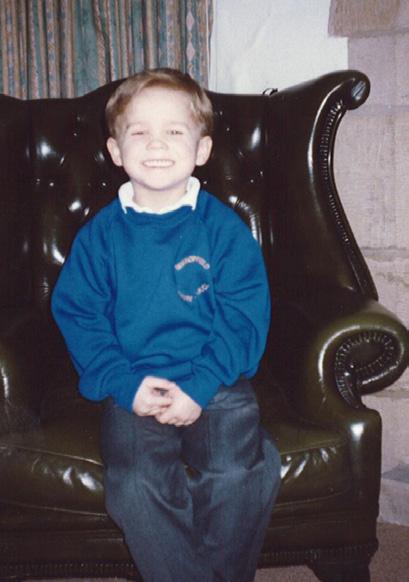


Jonathan’s Voice (Charity number: 1180424) is a mental health charity, set up in 2017 in the memory of Jonathan McCartney who tragically took his own life that year. Our charity has three core aims:
• To increase the understanding of mental health and suicide risk for the purposes of reducing stigma and empowering individuals to speak about mental health, including knowing how to respond.
• To educate organisations, especially in the professional environment, for the purpose of encouraging them to create the right
support structures, policies and practice to support employees with mental health and well-being.
• To support research into suicide. The research explores male suicide, specifically the cultural and social factors that put men at risk of suicidal despair and the factors that can aid men to recover a meaningful life.
To find out more about Jonathan’s story, the work of Jonathan’s Voice and to get in touch please visit us at jonathansvoice.org.uk

The research was supported by funding from the following charities: Jonathan’s Voice (Charity number: 1180424) and The Liam Britton Foundation (Charity number: 1166009). Further information can be found here:
jonathansvoice.org.uk liambritton.org.uk
This public guide was supported by funding from MANUP? Further information can be found here: manup.how Your feedback on this guide is invaluable in helping us evaluate our impact and improve future materials. Share your views with us: malesuicideresearch.com/feedback This research was conducted by researchers at the ‘Suicidal Behaviour Research Lab’ at the University of Glasgow. Contact
Your feedback

Contact information: Dr Susanna Bennett



Read the full research report here.